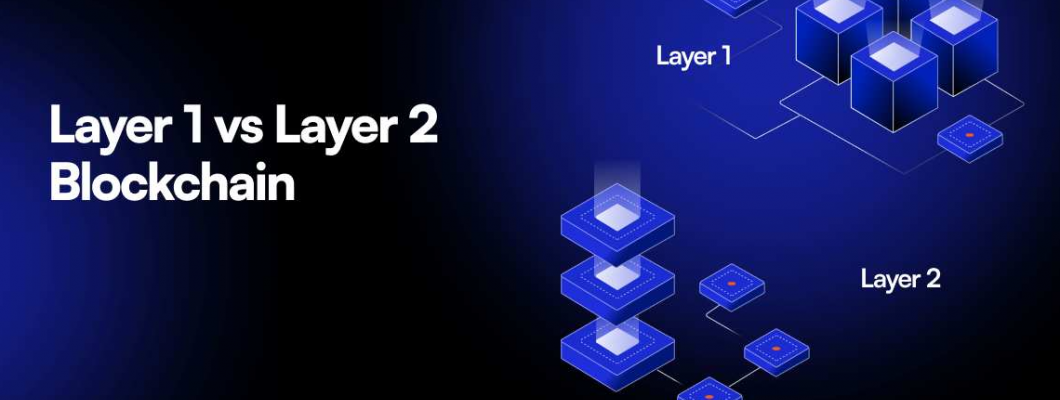
Blockchain adoption has surged in recent years, but scalability remains a critical challenge. As networks grow, slow transactions and high gas fees can hinder their efficiency. To solve this, developers rely on Layer 1 and Layer 2 scaling solutions—each offering distinct advantages and trade-offs. But how do you choose the right one for your blockchain project?
This blog explores the differences between Layer 1 and Layer 2 scaling, their benefits, and how to decide which one fits your needs.
What is Layer 1 Scaling?
Layer 1 refers to the base blockchain network itself, such as Bitcoin, Ethereum, or Solana. Scaling at this level means modifying the core protocol to enhance transaction speed and efficiency.
Key Layer 1 Scaling Techniques
✅ Sharding – Splits blockchain data into smaller parts (shards) for parallel processing. (Example: Ethereum 2.0)
✅ Consensus Mechanism Improvements – Switching from Proof-of-Work (PoW) to Proof-of-Stake (PoS) for faster transactions. (Example: Ethereum’s PoS upgrade)
✅ Block Size Increase – Allows more transactions per block but risks centralization. (Example: Bitcoin Cash)
Pros of Layer 1 Scaling
Permanent solution – No reliance on additional layers.
Improves overall network security and decentralization.
No need for external integrations or off-chain dependencies.
Cons of Layer 1 Scaling
Requires network-wide consensus for upgrades.
Hard forks may be needed, leading to potential splits.
Long development and implementation time.
Examples of Layer 1 Blockchains
Bitcoin – Uses SegWit and Taproot for on-chain improvements.
Ethereum 2.0 – Implements sharding and PoS to scale.
Solana – Uses Proof-of-History (PoH) to increase transaction speed.
What is Layer 2 Scaling?
Layer 2 solutions work on top of Layer 1 blockchains to increase speed and reduce fees. Instead of modifying the base protocol, these solutions offload transactions to an additional layer while maintaining security.
Key Layer 2 Scaling Techniques
✅ Rollups (Optimistic & ZK-Rollups) – Bundles transactions into a single batch before processing on the main blockchain. (Example: Arbitrum, zkSync)
✅ State Channels – Opens a private transaction channel between users to minimize on-chain interactions. (Example: Bitcoin’s Lightning Network)
✅ Sidechains – Parallel chains that interact with the main blockchain but operate independently. (Example: Polygon for Ethereum)
Pros of Layer 2 Scaling
Faster transactions and lower fees.
No need for major changes to Layer 1.
Enhances blockchain usability without sacrificing decentralization.
Cons of Layer 2 Scaling
Relies on external networks, which can introduce security risks.
Some solutions (e.g., Optimistic Rollups) have withdrawal delays.
More complex architecture requiring cross-chain compatibility.
Examples of Layer 2 Solutions
Bitcoin’s Lightning Network – Enables near-instant micropayments.
Ethereum’s Arbitrum & Optimism – Uses rollups to reduce congestion.
Polygon (MATIC) – Provides a scalable sidechain for Ethereum.
Layer 1 vs. Layer 2: Key Differences
Which Scaling Solution is Right for Your Blockchain Project?
When to Choose Layer 1 Scaling:
Your project needs long-term scalability with built-in security.
You want to avoid dependency on third-party Layer 2 solutions.
Your blockchain requires native upgrades to support future use cases.
Best for: Enterprise blockchains, base protocol development, decentralized finance (DeFi) protocols requiring deep integration.
When to Choose Layer 2 Scaling:
Your project needs fast transactions and lower fees immediately
You want to scale without waiting for Layer 1 upgrades.
Your platform handles a high volume of micropayments or DeFi interactions.
Best for: Payment networks, gaming dApps, decentralized exchanges (DEXs), NFT marketplaces, and DeFi platforms.
Conclusion: The Future of Blockchain Scaling
Both Layer 1 and Layer 2 solutions are crucial for blockchain scalability. Layer 1 ensures a solid foundation, while Layer 2 provides quick fixes for congestion and high costs.

Leave a Comment